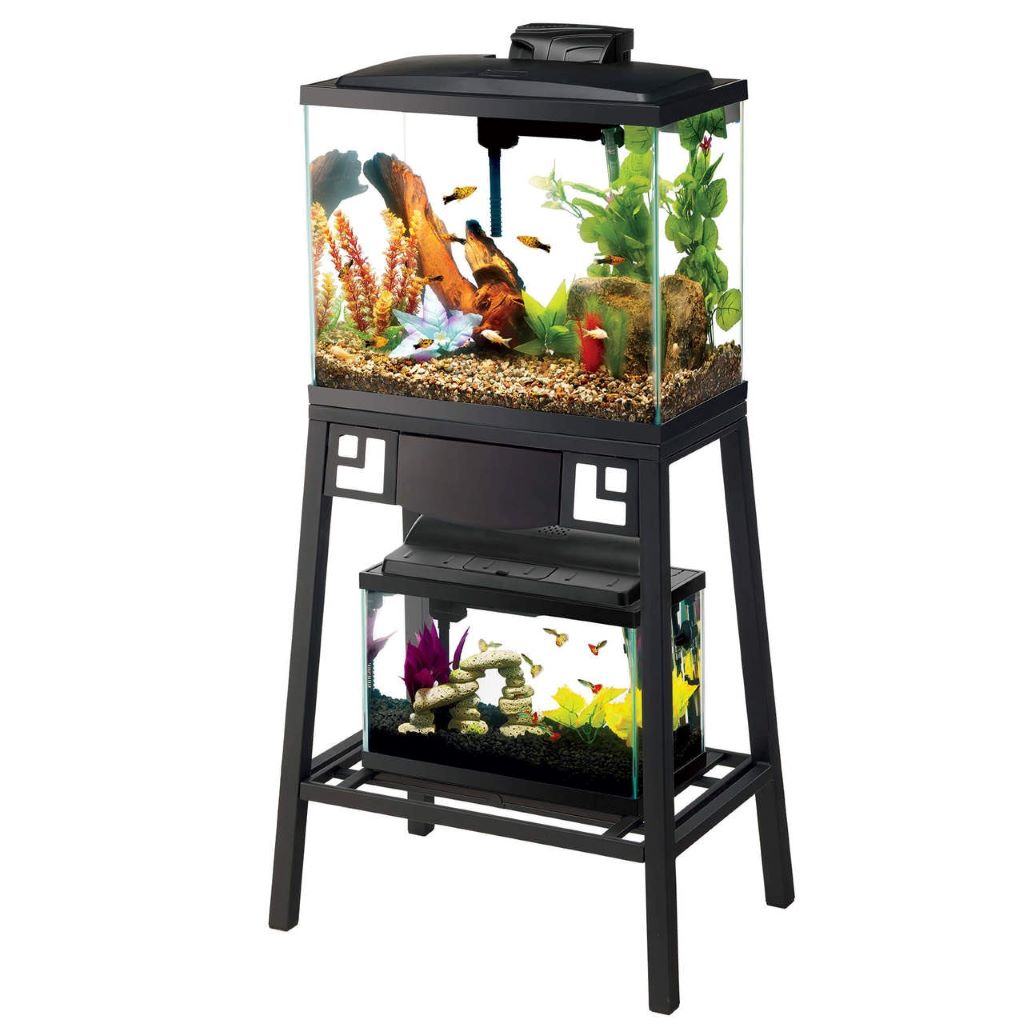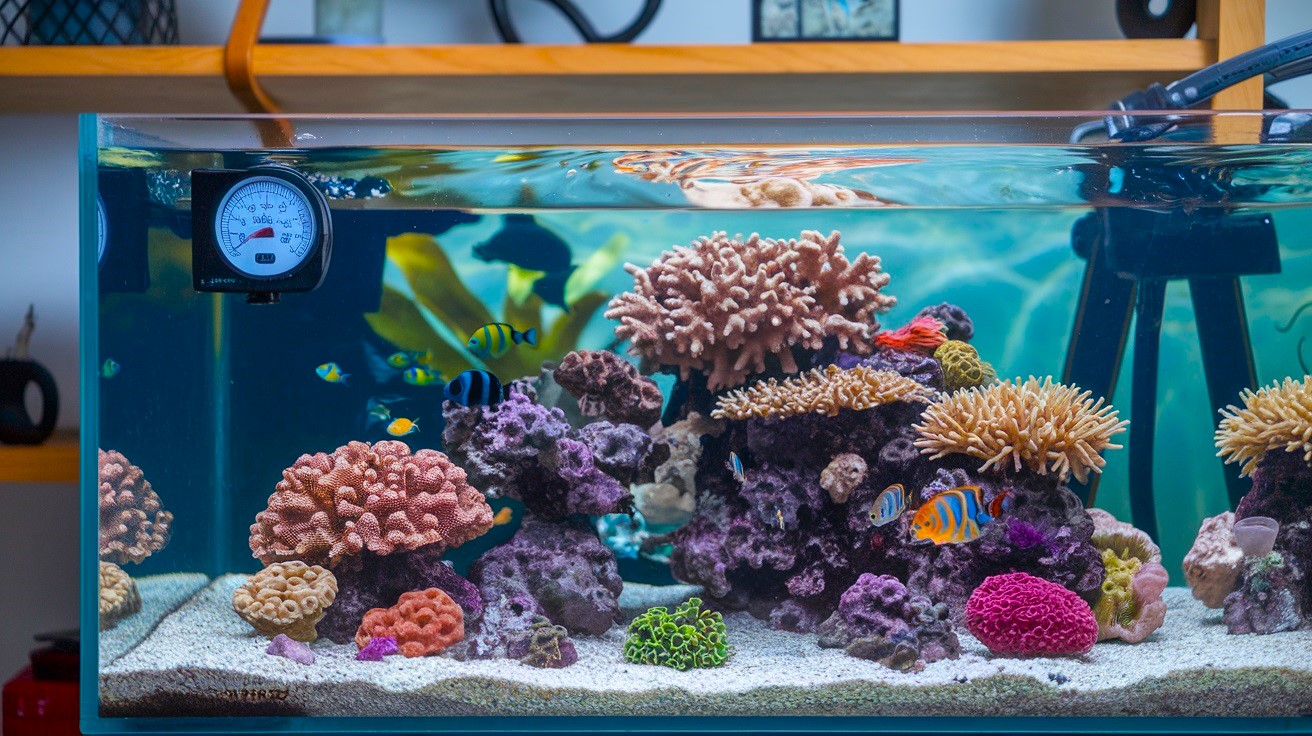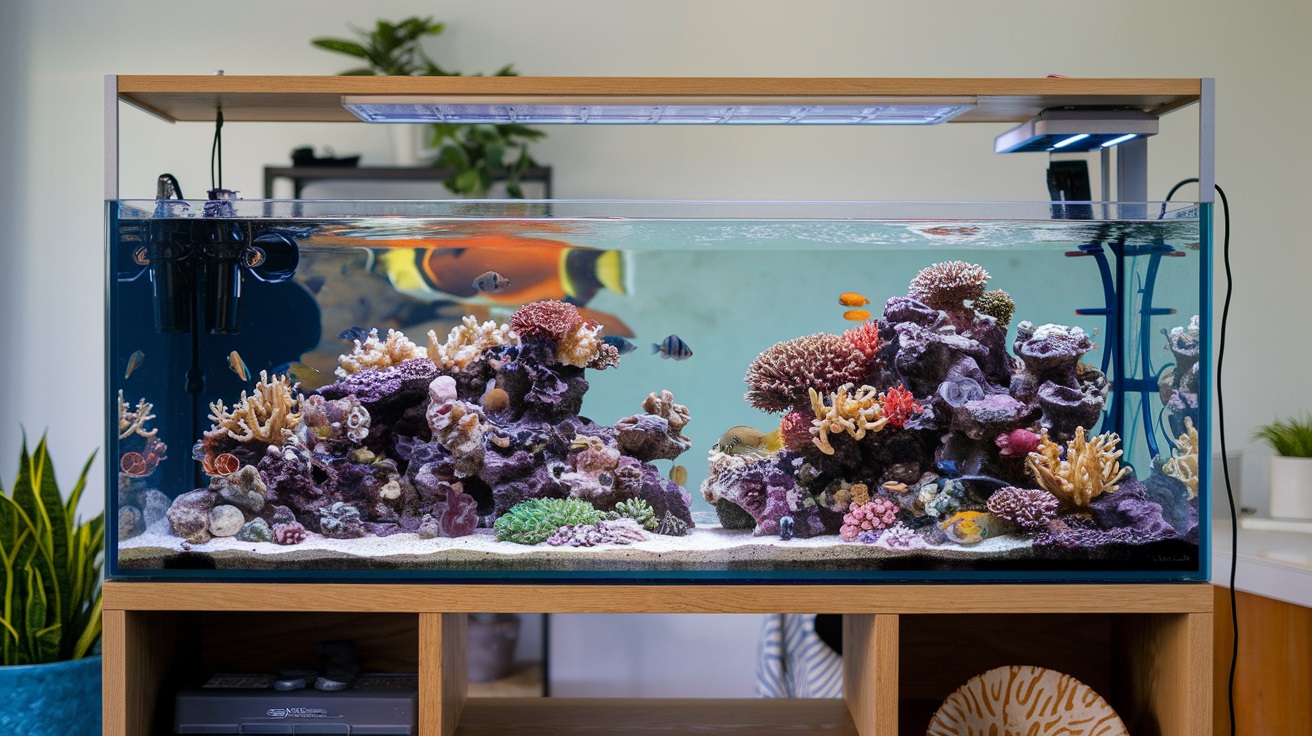The gentle hum of the filter, the mesmerizing dance of the fish, the vibrant colors of the coral – an aquarium brings a piece of the underwater world right into your home. But this tranquil oasis can quickly turn into a maintenance nightmare if you’re not careful, especially when it comes to the structural integrity of your aquarium stand. Humid climates pose a particular challenge, as the ever-present moisture in the air can wreak havoc on metal stands, leading to unsightly rust and potentially compromising the safety of your beloved aquatic environment. To combat this issue, consider implementing rust prevention for metal aquarium stands to ensure longevity and peace of mind.
This comprehensive guide delves deep into the world of rust prevention for metal aquarium stands in humid climates. We’ll explore the science behind rust formation, discuss the most effective prevention strategies, review some of the best rust-resistant stands on the market, and answer some of the most frequently asked questions about this common problem. Whether you’re a seasoned aquarist or just starting your journey, this article will equip you with the knowledge and tools to keep your aquarium stand looking its best and provide a secure foundation for your underwater paradise for years to come.
Understanding the Enemy: Why Rust Forms on Metal
Before we dive into prevention strategies, it’s crucial to understand the underlying cause of rust. Rust, or iron oxide, is formed through a chemical process known as oxidation. This occurs when iron (the primary component of most metals used in aquarium stands) reacts with oxygen in the presence of water or moisture.
Think of it like this: iron atoms are social butterflies, always eager to bond with oxygen. In a dry environment, this “socializing” is limited. However, when moisture enters the picture, it acts as a catalyst, accelerating the reaction between iron and oxygen. The result? Those telltale reddish-brown flakes we all know as rust.
Humid climates, with their high moisture content in the air, create the perfect environment for this oxidation process to thrive. Even seemingly insignificant condensation from the aquarium itself can contribute to rust formation on the stand. This is why it’s essential to be proactive and implement preventative measures to safeguard your metal stand from the relentless attack of rust.
Prevention is Key: Protecting Your Metal Aquarium Stand
The good news is that rust formation is not inevitable. With the right approach and consistent care, you can significantly reduce the risk of rust and keep your aquarium stand looking pristine for years to come. Here are some proven strategies to combat rust in humid climates:
-
Choose the Right Material:
- Stainless Steel: When it comes to rust resistance, stainless steel reigns supreme. This alloy contains chromium, which forms a protective layer on the surface of the steel, preventing oxidation. Look for marine-grade stainless steel for optimal protection in humid environments.
- Powder-coated Steel: Powder coating provides a durable, protective layer over the steel. This coating acts as a barrier against moisture and oxygen, hindering the rust formation process. Choose a powder-coated stand with a high-quality finish for long-lasting protection.
- Aluminum: While aluminum doesn’t rust in the same way as steel, it can corrode. However, this corrosion typically forms a protective layer that prevents further damage. Aluminum stands are lightweight and often more affordable than stainless steel options.
-
Location, Location, Location:
- Avoid Direct Sunlight: Sunlight can accelerate the oxidation process, increasing the risk of rust. Place your aquarium stand in a shaded area, away from windows.
- Maintain Adequate Ventilation: Good airflow helps to reduce moisture buildup around the stand. Ensure there is sufficient space between the stand and the wall, and avoid placing it in cramped or poorly ventilated areas.
-
Regular Cleaning and Maintenance:
- Wipe Down Spills and Condensation: Even small amounts of water can contribute to rust formation. Wipe down the stand regularly with a soft, dry cloth to remove any spills or condensation.
- Inspect for Signs of Rust: Regularly inspect the stand for any signs of rust, especially in areas prone to moisture, such as the feet and joints. Address any rust spots promptly to prevent further damage.
- Apply Protective Coatings: Consider applying a protective coating, such as a rust inhibitor or wax, to further enhance the stand’s resistance to moisture. Follow the manufacturer’s instructions carefully when applying any coatings.
-
Humidity Control:
- Use a Dehumidifier: In particularly humid climates, a dehumidifier can be a valuable tool in reducing moisture levels in the room. This can significantly decrease the risk of rust formation on your aquarium stand.
- Monitor Humidity Levels: Keep an eye on the humidity levels in your home using a hygrometer. Aim for a relative humidity level below 60% to minimize the risk of rust.
-
Consider Aquarium Stand Pads:
- Absorb Moisture: Aquarium stand pads are designed to absorb any moisture that may drip from the tank, preventing it from reaching the stand. This adds an extra layer of protection against rust.
- Even Out Weight Distribution: These pads also help to distribute the weight of the aquarium evenly, reducing stress on the stand and minimizing the risk of damage that could lead to rust formation.
By implementing these preventative measures, you can create a hostile environment for rust and ensure the longevity and structural integrity of your metal aquarium stand, even in the most challenging humid climates.
Reviewing the Top Contenders: Rust-Resistant Aquarium Stands

Now that you’re armed with the knowledge to prevent rust, let’s explore some of the best rust-resistant aquarium stands available on the market. These stands are designed with durability and longevity in mind, offering peace of mind and a stylish foundation for your aquatic masterpiece.
-
Aquamaxx Black Aquarium Stand:
- Material: Powder-coated steel with a sleek black finish.
- Features: Adjustable feet for leveling on uneven surfaces, open back design for easy access to equipment, and cable management system.
- Pros: Durable construction, modern design, excellent value for money.
- Cons: Powder coating may chip over time with rough handling.
-
Innovative Marine APS Stand:
- Material: Marine-grade aluminum frame with high-pressure laminate panels.
- Features: Modular design for customization, integrated sump area, and soft-close doors.
- Pros: Lightweight yet sturdy, corrosion-resistant, sleek and modern aesthetic.
- Cons: Higher price point compared to steel stands.
-
Red Sea Reefer Deluxe Stand:
- Material: Powder-coated aluminum frame with weather-resistant plywood panels.
- Features: Built-in refugium compartment, adjustable feet, and removable panels for easy access.
- Pros: Designed specifically for saltwater aquariums, robust construction, excellent cable management.
- Cons: Limited color options, primarily designed for larger aquariums.
-
Fluval Flex Stand:
- Material: Powder-coated steel with a contemporary design.
- Features: Integrated filtration system, multiple color options, and ample storage space.
- Pros: Space-saving design, convenient filtration solution, stylish and modern.
- Cons: May not be suitable for larger aquariums, limited weight capacity.
-
Aqueon Forge Aquarium Stand:
- Material: Powder-coated steel with a woodgrain finish.
- Features: Multiple size options, adjustable feet, and open shelf for storage.
- Pros: Affordable, classic design, readily available.
- Cons: Powder coating may be susceptible to scratches.
Remember that the best stand for you will depend on your specific needs and preferences, including the size of your aquarium, your budget, and your aesthetic preferences. Consider the factors discussed earlier, such as material, features, and design, to make an informed decision.
Finding the Sweet Spot: The Perfect Height for Your Reef Tank Stand
Addressing Your Concerns: FAQs about Rust and Aquarium Stands
-
Can I paint a rusty metal aquarium stand?
Yes, you can paint a rusty metal stand to improve its appearance and protect it from further rusting. However, proper preparation is crucial. First, remove all loose rust using a wire brush or sandpaper. Then, apply a rust converter to neutralize any remaining rust. Finally, prime the surface with a metal primer before applying a rust-resistant paint.
-
How do I remove rust from my aquarium stand?
There are several methods for removing rust, depending on the severity of the rust. For minor rust spots, you can use a paste made of baking soda and water or a commercial rust remover. For more extensive rust, you may need to use sandpaper or a wire brush. Always test any rust removal method on an inconspicuous area first to ensure it doesn’t damage the stand’s finish.
-
Are wooden aquarium stands better than metal stands in humid climates?
Wooden stands can be a good option in humid climates, as they are less susceptible to rust. However, wood can be prone to water damage and warping if not properly sealed and maintained. Choose a stand made from water-resistant wood, such as teak or cedar, and apply a protective sealant regularly.
-
What should I do if my aquarium stand is structurally compromised due to rust?
If you notice any signs of structural damage, such as bending, cracking, or instability, it’s crucial to address the issue immediately. Do not place your aquarium on a compromised stand, as this could lead to a catastrophic failure. Consult a professional to assess the damage and determine if the stand can be repaired or needs to be replaced.
-
How can I prevent condensation from forming on my aquarium stand?
Condensation can form on the stand due to temperature differences between the aquarium water and the surrounding air. To minimize condensation, ensure the aquarium lid is properly fitted, maintain a consistent room temperature, and consider using a tank heater to keep the water temperature stable.
The Final Word: Preserving Your Aquatic Investment
Your aquarium is more than just a decorative element; it’s a thriving ecosystem that brings joy and tranquility to your home. Protecting your investment starts with a solid foundation – a rust-free, sturdy aquarium stand. By understanding the causes of rust, implementing preventative measures, and choosing the right stand for your needs, you can ensure your aquatic haven remains a source of pride and enjoyment for years to come.
Remember, consistent care and attention are key to preventing rust in humid climates. Regularly inspect your stand, address any signs of rust promptly, and maintain a clean and dry environment around your aquarium. With a little effort and the right knowledge, you can conquer the challenges of humidity and keep your metal aquarium stand looking its best, providing a secure and stylish home for your underwater companions.
Read More:
The ideal Reef Aquarium temperature




